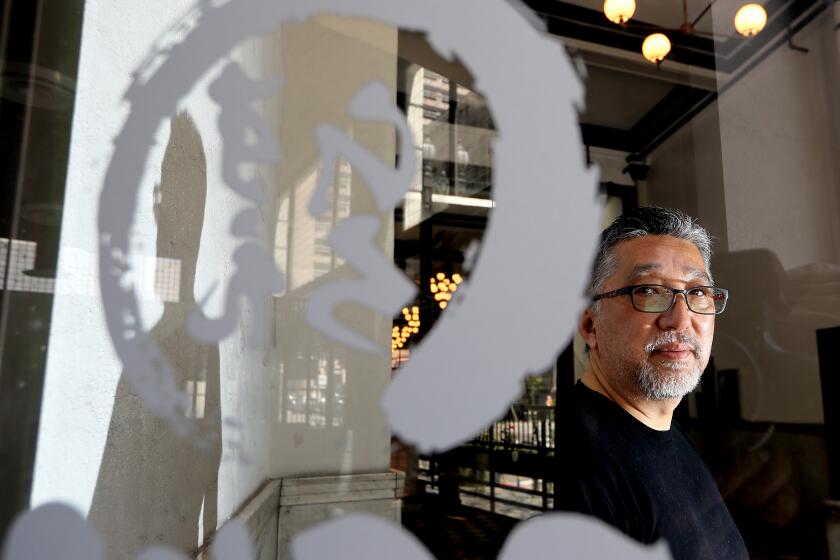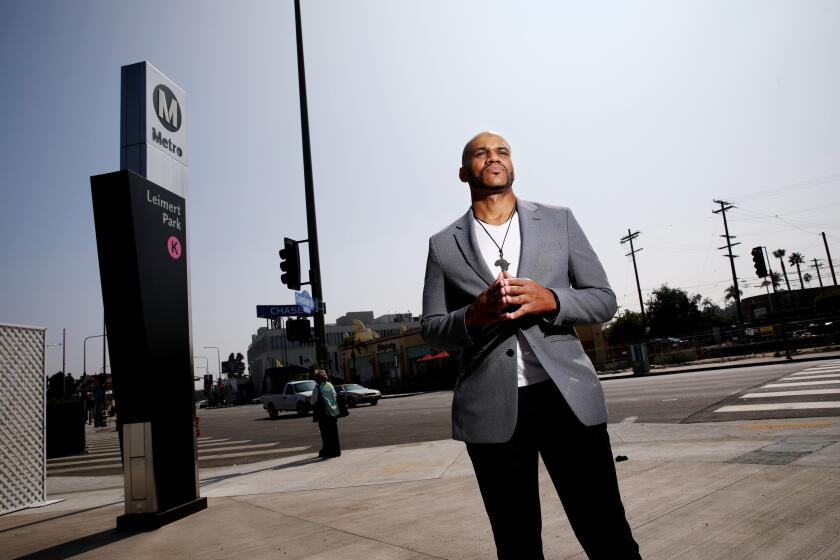East L.A. to Santa Monica in 1 hour 9 minutes: A look inside Metro’s new Regional Connector
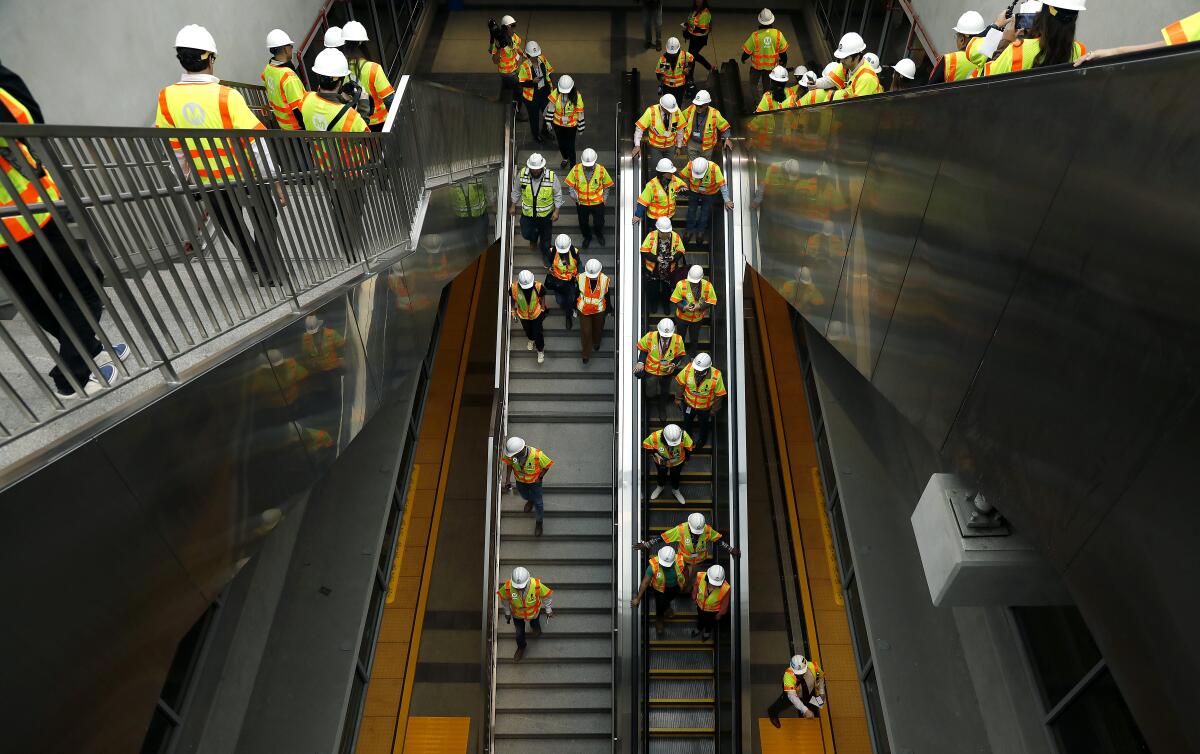
- Share via
A rail line running through the heart of downtown Los Angeles, better connecting the foothills to the beaches, opens on June 16, Father’s Day weekend.
Known as the Regional Connector, the two-mile line eliminates the need to transfer between the L (Gold), A (Blue) and E (Expo) lines, enabling commuters to ride from Azusa to Long Beach in one hour and 58 minutes or East Los Angeles to Santa Monica in one hour and nine minutes. Officials plan to make rides free for the opening.
Two years behind schedule and $335 million over budget, the four-stop, subterranean light-rail line traverses the historic city core from the already existing 7th/Metro Center station to the newly constructed Little Tokyo/Arts District station.
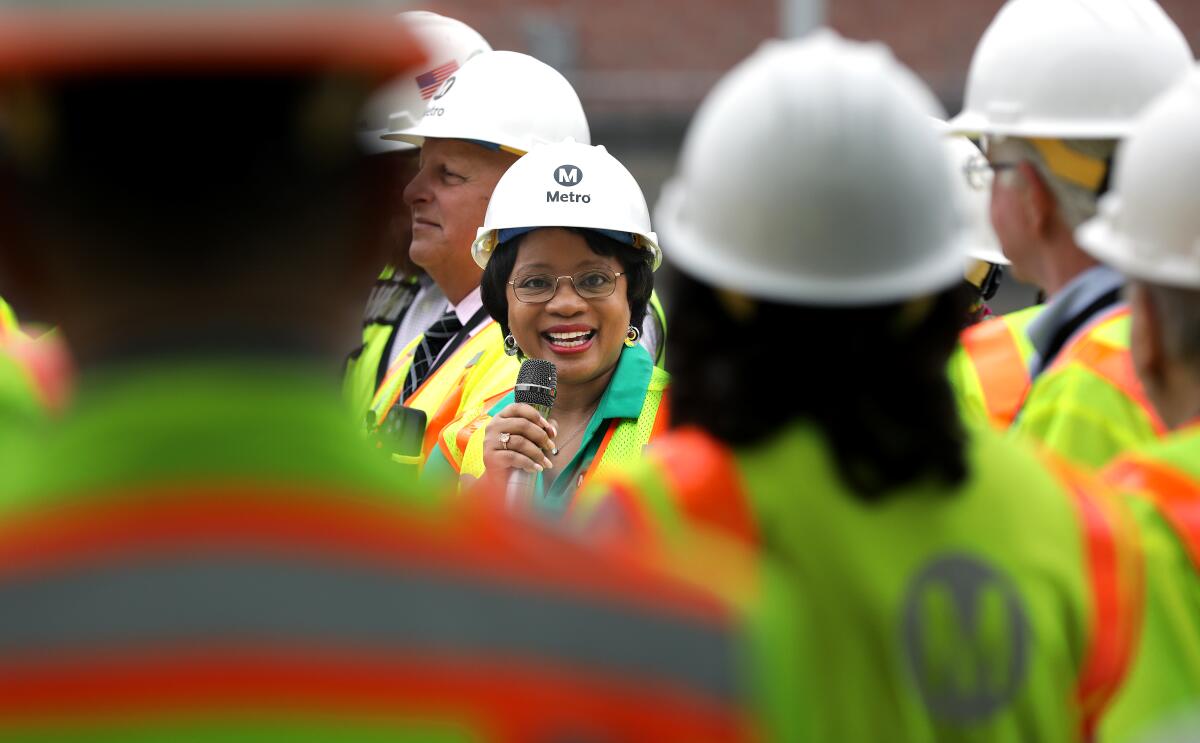
“This is a game changer,” said Stephanie Wiggins, chief executive of the Metropolitan Transportation Authority. “It really eliminates all of that what we call friction in our system and eliminates having to worry about where to transfer to connect to another train.”
The new tracks link the Gold, Blue and Expo routes, creating longer uninterrupted north-south and east-west transit options for riders. The connector brings the three major lines together along a single route downtown and Wiggins said it will shave off 20 minutes from travel times for commuters who previously had to transfer. The rail line is crucial to the agency’s overall plan to vastly expand its rail network ahead of the 2028 Olympic Games.
Suehiro Cafe in downtown L.A.’s Little Tokyo is the latest legacy business falling to rail development and gentrification.
The construction under some of Los Angeles’ oldest urban areas proved difficult.
“To build something in the heart of downtown that connects three existing legacy lines built in three different decades — no one’s ever done this before,” said Matthew Antonelli, deputy chief program manager for the project.
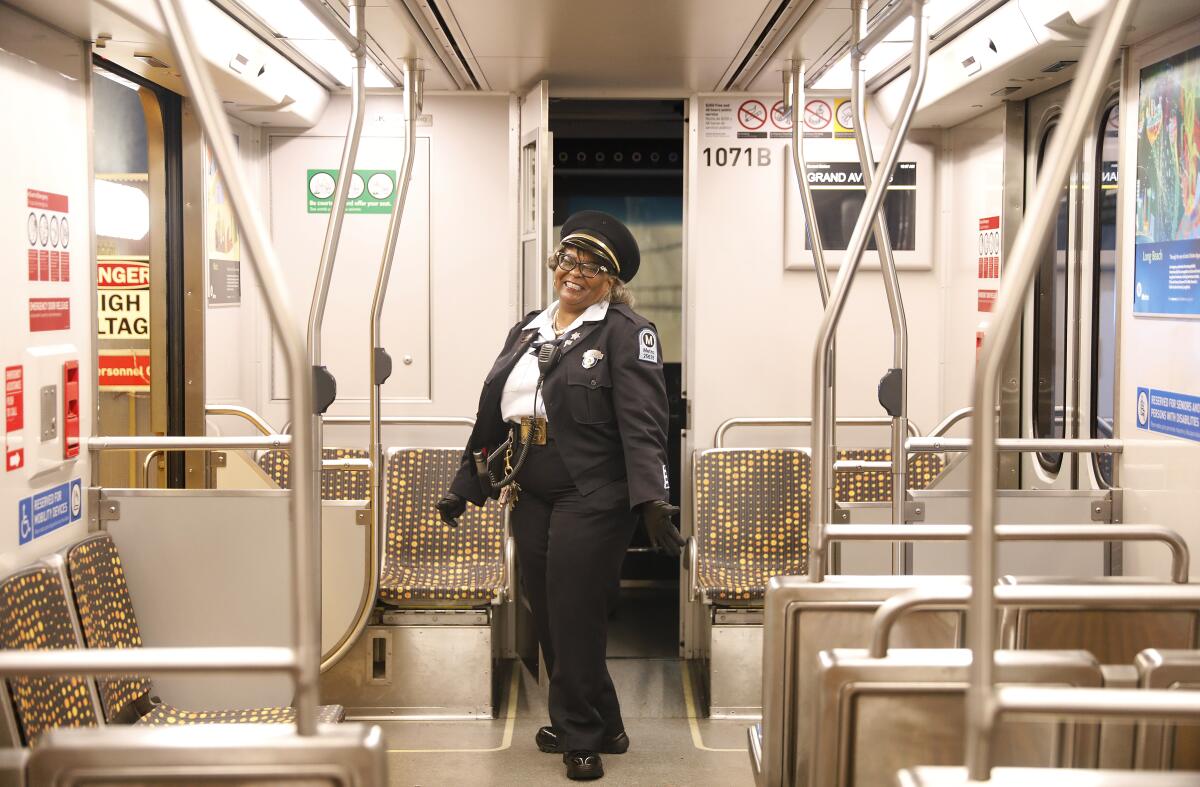
Tunnel excavations uncovered everything from an old aqueduct to whale bones. Near Walt Disney Hall and the Colburn School, engineers had to build a track without making vibrations or sound that would mar the experience for concertgoers. At Broadway, engineers had to construct the station so that it could sustain the weight of a high-rise building overhead. And Bunker Hill provided a unique challenge: The Grand Avenue station had to be built more than 100 feet below ground, reachable only by a bank of six elevators and stairs.
The Little Tokyo station, once a street-level stop for the Gold Line, was built anew underground. The connector allows for the north-south combination of the A and L lines to run 49.5 miles from Azusa to Long Beach (soon to be one long A line) and the east-west E Line to go 22.5 miles from East Los Angeles to Santa Monica. The new A line will be the longest light-rail route in the nation, transit officials said.
The new Crenshaw/LAX line is already bringing new money to the cultural hub of L.A.’s Black community. But many fear high prices will push residents out.
“This is our new red car, only it’s yellow,” said Los Angeles County Supervisor and Metro board member Hilda Solis. “It will have a lasting impact and help to revive our downtown area, but also our iconic cultural places like Little Tokyo, Bunker Hill and Grand [Avenue].”
Over the summer, Metro is planning a series of community events around each of the stations to showcase Los Angeles’ newest train.
Art inside the Little Tokyo station depicts the historical struggles that have shaped the city, from the plight of those on Skid Row to the Gabrielino Tongva Tribes.
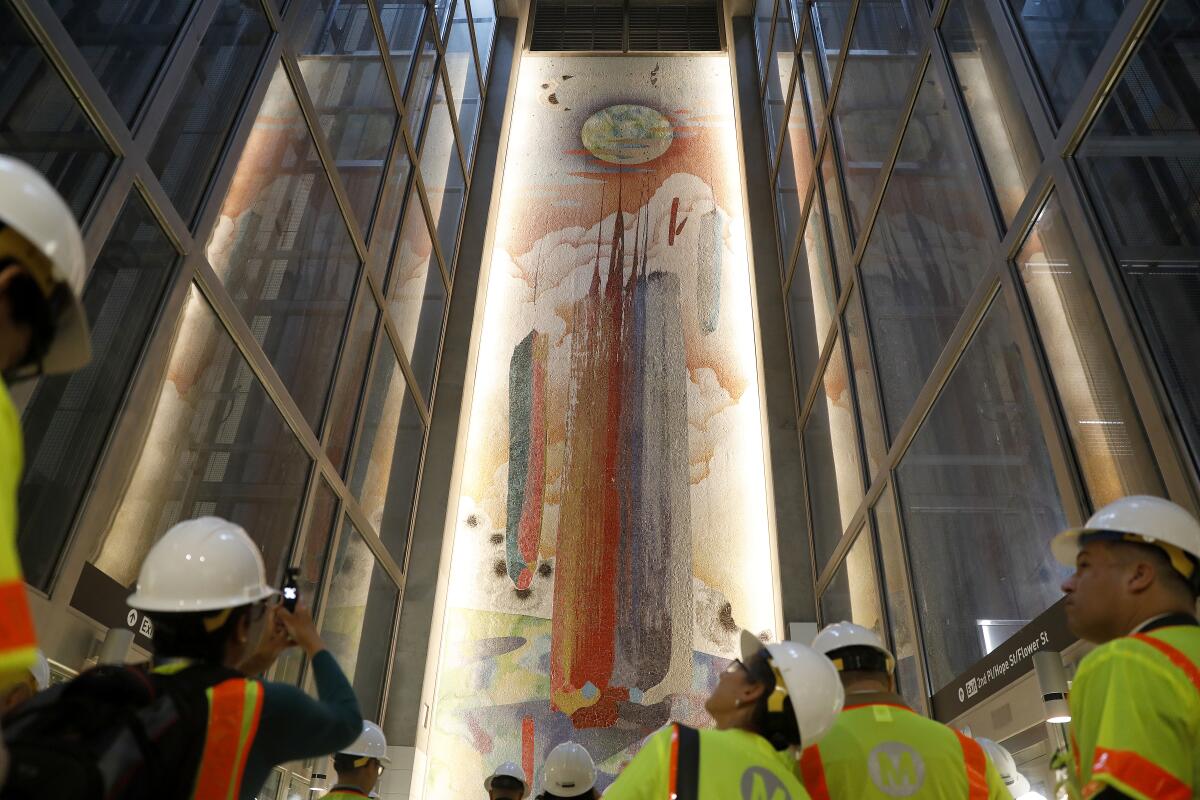
The Historic Broadway stop spills out onto what was once the city’s shopping center and features a 148-foot long glass abstract mosaic paying homage to the red cars, long-defunct streetcars that traversed the region. A deck at the Grand Avenue Arts/Bunker Hill exit opens up to a picturesque pedestrian bridge behind Disney Hall, the Broad Museum and within sight of the Music Center. A dramatic 61-foot abstract mural lines the towering wall of elevators that descend into the station.
More to Read
Sign up for Essential California
The most important California stories and recommendations in your inbox every morning.
You may occasionally receive promotional content from the Los Angeles Times.

